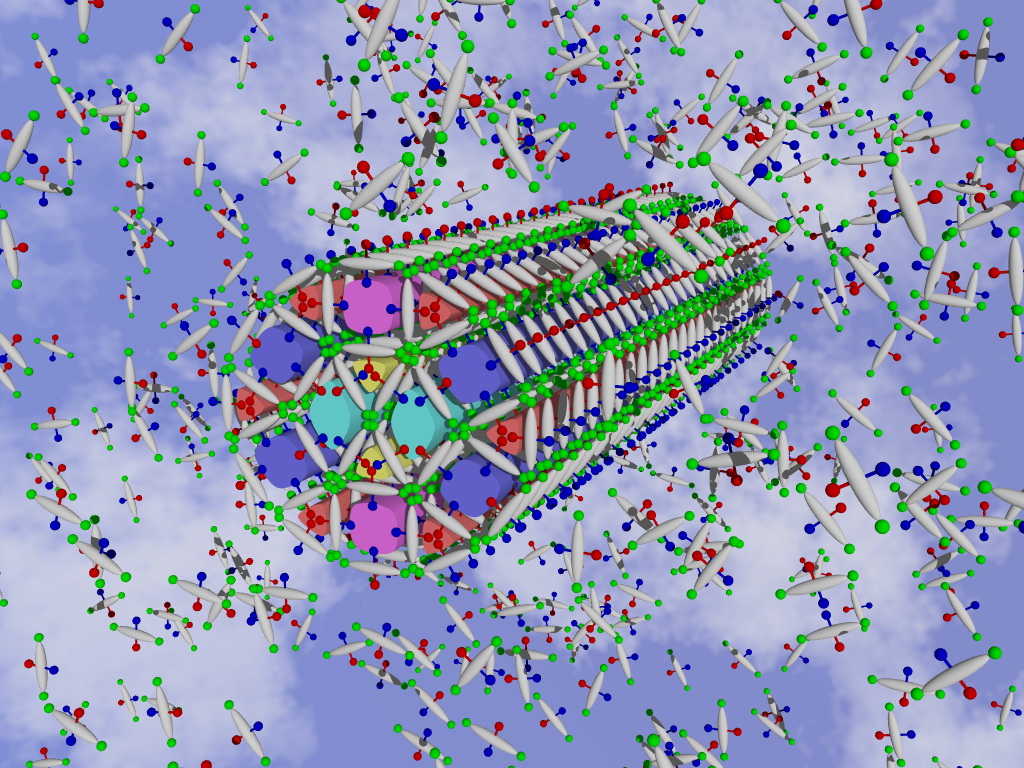T-shaped molecules with a rod-like aromatic core and a flexible side chain form liquid crystal honeycombs with aromatic cell walls and a cell interior filled with the side chains. Here, we show how the addition of a second chain, incompatible with the first (X-shaped molecules), can form honeycombs with highly complex tiling patterns, with cells of up to five different compositions (“colors”) and polygonal shapes. The complexity is caused by the inability of the side chains to separate cleanly because of geometric frustration. Furthermore, a thermoreversible transition was observed between a multicolor (phase-separated) and a single-color (mixed) honeycomb phase. This is analogous to the Curie transition in simple and frustrated ferro- and antiferromagnets; here spin flips are replaced by 180° reorientations of the molecules.

原文链接:http://www.sciencemag.org/content/331/6022/1302.full.pdf